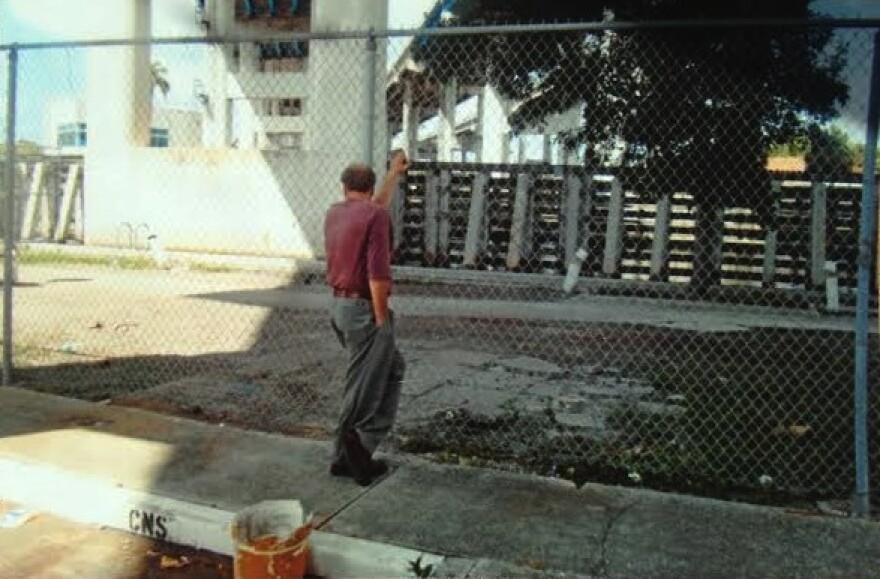NOTE: Author Tony Dokoupil will be speaking at the Miami Book Fair International on Sunday, November 23rd at 5:30.
Like many born in the '50s, Interstate 95 had some pretty wild days in the 1970s.
Florida was essentially “a 600-mile bong through which pot was pulled into the lungs of the country,” writes Tony Dokoupil. And “Interstate 95 was the glass tube of the bong,” he told WLRN. “You could not get high in America without touching something that had traveled on that particular stretch of asphalt.”
Dokoupil’s new book -- "The Last Pirate: A Father, His Son, and the Golden Age of Marijuana" -- is the story of the drug-smuggling culture of the '70s and '80s and the secret pot-smuggling past of Dokoupil’s own father. (Spoiler: Both involve loads of drugs on I-95.)
For our End of the Road series, we asked Dokoupil what he learned about I-95 in the process of reporting his book. Here are four of the highway’s rebellious roles in the '70s and '80s.
1. I-95: The Reefer Express
A huge amount of the pot smuggled into the U.S. at that time was coming from South America and the Caribbean. As a result 90 percent of the dope coming into the United States came through Florida. Virtually all of which, Dokoupil says, was run up I-95. “So many people were driving dope up I-95 it began to be referred to as ‘The Reefer Express,’” said Dokoupil.
The product would come in “big burlap bales, [smugglers would] throw them onto the back of a pickup truck or in a Winnebago and then get them on the road... And you’d keep on heading north,” Dokoupil said. “When you got to the Georgia border you would hang a left if you had a market in Louisiana or in Texas or you would keep going straight up the right-hand side of the country. All the way to Maine if you needed to.”
2. I-95: A hyperbolic measure of coke snorting
When Dokoupil interviewed old smugglers, he was surprised to discover I-95 had become more than just a logistically useful route -- it had become part of the drug culture.
“So many of those people who were driving the dope were doing cocaine -- and a lot of cocaine” he said, “they started describing their lines as ‘lines as long as I-95.’”
As in: “How coked up is he? Well, he’s been doing lines as long as I-95.”
3. I-95: A drug-plane runway
Through the drug-trade golden years, a large stretch of I-95 in Martin County was unfinished. Nothing more than a highway in the works to the common eye.
But as the New York Times reported, innovative drug smugglers had better ideas:
During several years of construction the incomplete portion of I-95 took on a role no one had anticipated. ''It became the longest runway in the United States for drug smuggling planes,'' said James D. Holt, the sheriff of Martin County.
“All through the marijuana years,” Dokoupil said, “there was essentially a public runway with no traffic on it where people could drop things, land, hand things off.”

4. I-95: Shelter from The Reefer Express
Dokoupil’s father moved the family to Cutler Ridge in the '80s. He sent his son to private school, took him on fancy vacations and then suddenly when Dokoupil was 9, his dad took off.
In reporting the book, he learned his father eventually became addicted to drugs, lost hundreds of thousands of dollars and wound up living under I-95. The overpass where 95 crosses the Miami River was inhabited by a community of guys like Dokoupil’s father. Drugs were trafficked overhead, and their fallout dwelled below.
Dokoupil visited the site with his father while doing his research. He said it’s all fenced off now, and his father wanted nothing to do with it anymore. But as Dokoupil described in the book, his dad still has romantic memories of that time in his life.
“In the evening, he joined Huck-and-Jim hobo teams that fished the river for food using found nets and rods liberated from the yachts nearby. Usually all they caught were minnows, good for just one bite of meat, prepared in a soup can with river water boiled by a scavenged Sterno torch. After dinner he slept in a box. His only change of clothes had been stolen, and he would wake up with palmetto bugs nibbling his eyelashes or resting on the plateau of his cheek. It got to where he always felt like they were on him. And bugs are bigger in Florida, novelty size. When a Miami cockroach catches a bit of streetlight it looks almost decorative, a work of elfin craftsmanship and design.”
Tony Dokoupil is a senior writer for NBC news. His new book is "The Last Pirate: A Father, His Son, and the Golden Age of Marijuana."





